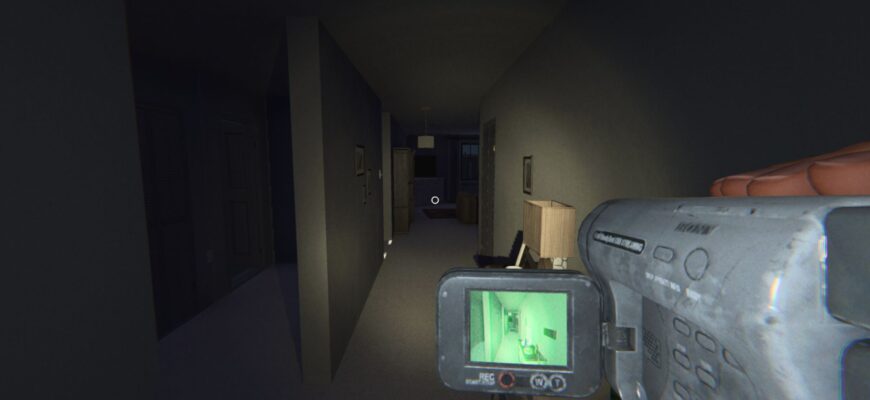From its humble beginnings as a solo developer`s vision to a thriving studio preparing for a major graphical overhaul and a Hollywood adaptation, Phasmophobia continues to evolve. Kinetic Games shares insights into its journey, design philosophy, and what the future holds for this pioneering co-op horror title.
When Kinetic Games first unveiled Phasmophobia, it wasn`t a grand production from a sprawling studio. It was the audacious vision of a single developer, Daniel Knight, daring players to become paranormal investigators in environments where malevolent entities roamed freely. Its subsequent success wasn`t just impressive; it carved out a niche, influencing a new wave of social-multiplayer horror games. Fast forward, and Kinetic Games is now a team of 32, not only refining its groundbreaking title but also collaborating with Blumhouse Productions for a big-screen adaptation.
The Evolution of Terror: New Maps and Refined Experiences
The developers are not content to rest on their laurels. A significant focus for Phasmophobia`s future involves a meticulous re-evaluation of its maps. Player data has spoken volumes, revealing a clear preference for smaller, more intimate environments like the infamous Tanglewood Drive, which an astonishing 70% of players frequent. This insight is guiding the creation of new maps, such as the upcoming “Diner,” designed to deliver condensed, high-intensity scares.
This strategic shift also means a comprehensive overhaul of existing larger maps, including the Prison and Brownstone High School. The goal is to make them more manageable and, crucially, more unique. “Currently in the school there`s a lot of rooms that are more or less the same. So we want all the rooms as unique as possible,” explains Daniel Knight. Expect these behemoths to potentially shrink, receiving the same quality-of-life and atmospheric improvements seen in the Sunny Meadows rework. Even beloved farmhouses like Grafton and Bleasdale are getting a facelift, with new art direction ensuring each location has a distinct, palpable identity – from “dark and dingy” to “ornate looking.”
Beyond Stock Assets: Crafting a Unique Identity
A major driving force behind these reworks and future updates is the desire for Phasmophobia to forge its own visual identity. Initially built using readily available Unity assets, the game, while terrifying in its mechanics, shared visual DNA with countless other indie titles. Kinetic Games is determined to change that, with a dedicated art team now meticulously crafting bespoke assets. This commitment extends to the character models, which are slated for replacement – a move that, while understandable for a higher benchmark, might elicit a touch of nostalgic irony for veteran players who`ve grown fond of the game`s infamous “bendy backs.” One can only hope for a toggle, perhaps, for old times` sake?
As Asim Tanvir hints, a significant milestone known as “Horror 2.0” is on the horizon. This suggests a comprehensive upgrade to the game`s core horror elements, promising even deeper immersion and more intense scares for players.
The Man Behind the Madness: Daniel Knight`s Journey
The story of Phasmophobia is inextricably linked to its creator, Daniel Knight. His journey is a testament to perseverance and unexpected triumph. “It was very hard getting into the headspace to hire people,” Knight admits, reflecting on the transition from a solo developer working 60+ hours a week to leading a team of 32. He famously started the game while out of work and living with his parents, who, with understandable concern, suggested it was “time to get a real job.” His own modest ambition was to sell a thousand copies – a figure that was hilariously surpassed within hours of the game`s release.
Knight`s unique perspective is also key to the game`s success. Despite not being a fervent player of horror games himself, he was inspired by tension-based horror films like The Haunting of Hill House and TV series such as The Terror. His primary design philosophy for Phasmophobia was to create a shared horror experience, where players faced fear together, rather than individually fleeing. He also valued games that allowed for quick, impactful sessions, translating into Phasmophobia`s bite-sized investigations.

Community vs. Vision: The Unyielding Core
With a thriving community, feedback is naturally abundant. Kinetic Games actively solicits input, but Daniel Knight remains steadfast on certain core design principles, especially when it comes to preserving the game`s unique brand of horror. Two major community requests have been firmly (and logically) put to rest:
- Capturing Ghosts: While tempting, the ability to capture a ghost after identification proved detrimental to the fear factor. “It kind of made it not as scary because you`re made more powerful than the ghost,” Knight explains, a technical decision reflecting an understanding of psychological horror.
- Playing as Ghosts: This popular request for many asymmetrical multiplayer games is a non-starter for Phasmophobia. Knight emphasizes the game`s social, cooperative nature, stating, “I don`t want to make it competitive. I don`t want to bring in that side of the player base.” This decision is a deliberate safeguard against toxicity and a commitment to shared, friendly scares.
Such decisions highlight a developer who, while listening, understands the delicate balance required to maintain the unique, terrifying alchemy that makes Phasmophobia special.
Hollywood Calls: Phasmophobia on the Big Screen
The game`s phenomenal success hasn`t gone unnoticed by Hollywood. A partnership with Blumhouse Productions, renowned for its horror films like The Conjuring Series (a personal favorite of Knight`s, especially the second installment), is underway for a big-screen adaptation. Yet, despite the allure of Tinseltown, Kinetic Games maintains its focus squarely on game development. The cinematic venture is a testament to the game`s cultural impact, but it`s clear the primary mission remains enhancing the player experience.
Kinetic Games: A Growing Entity
The growth of Kinetic Games from a one-man band to a 32-person studio is a success story in itself. It`s a journey that involved learning to delegate, manage a team, and scale operations. The office environment itself seems to be a testament to the game`s effectiveness: “We`re always hearing people in the office getting jump scared. QA team, art team, programming team – you can hear them screaming from across the office,” says Asim Tanvir. To which Daniel Knight shrewdly concludes, “It means things are working.”
As Phasmophobia evolves, Kinetic Games navigates the complexities of scaling a successful indie title, balancing ambitious technical overhauls with a steadfast commitment to its core horror identity. The future promises not just refined scares but a unique visual and gameplay experience, proving that even a game born from humble beginnings can truly shake things up.







